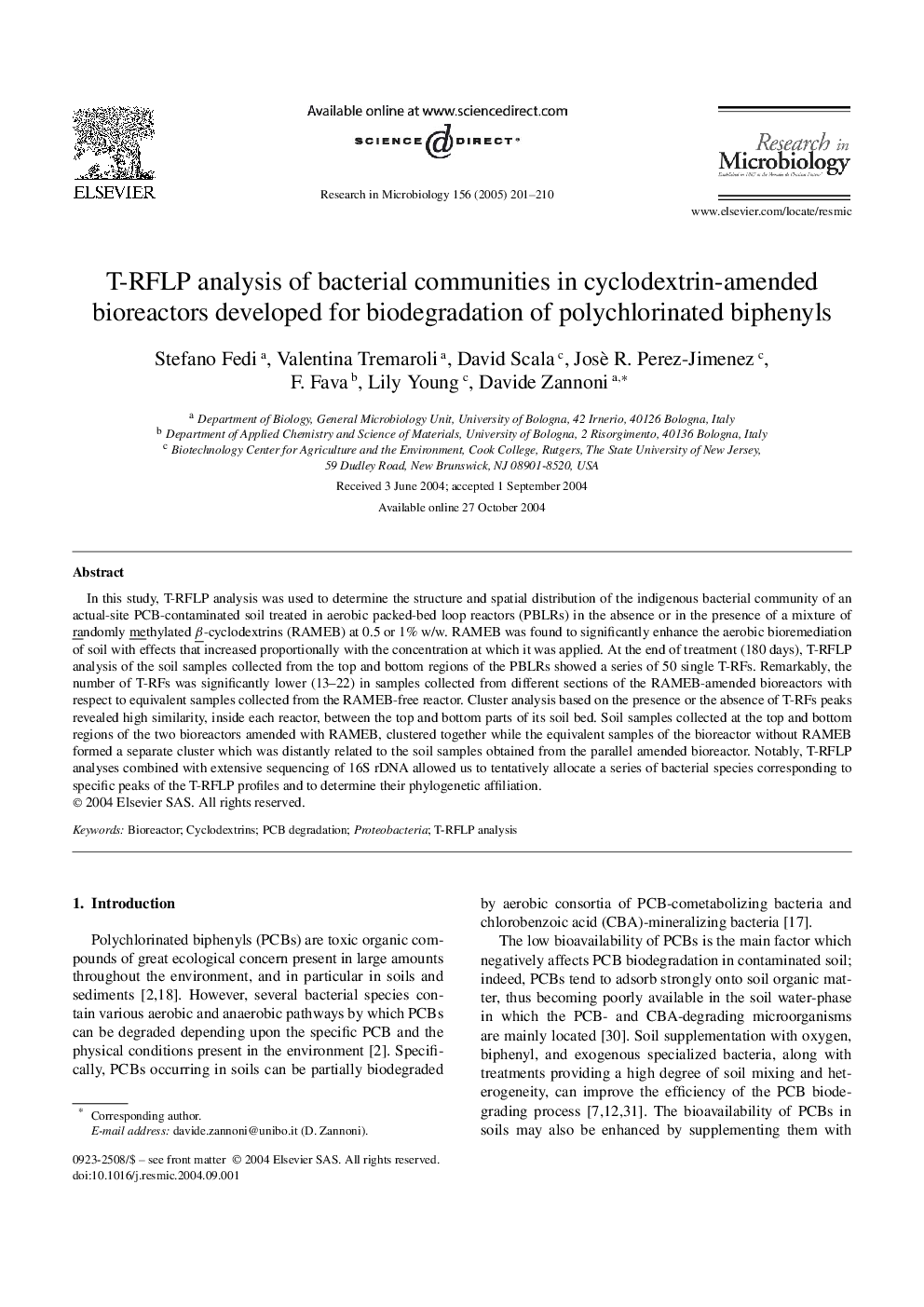| Article ID | Journal | Published Year | Pages | File Type |
|---|---|---|---|---|
| 9440058 | Research in Microbiology | 2005 | 10 Pages |
Abstract
In this study, T-RFLP analysis was used to determine the structure and spatial distribution of the indigenous bacterial community of an actual-site PCB-contaminated soil treated in aerobic packed-bed loop reactors (PBLRs) in the absence or in the presence of a mixture of randomly methylated β̲-cyclodextrins (RAMEB) at 0.5 or 1% w/w. RAMEB was found to significantly enhance the aerobic bioremediation of soil with effects that increased proportionally with the concentration at which it was applied. At the end of treatment (180 days), T-RFLP analysis of the soil samples collected from the top and bottom regions of the PBLRs showed a series of 50 single T-RFs. Remarkably, the number of T-RFs was significantly lower (13-22) in samples collected from different sections of the RAMEB-amended bioreactors with respect to equivalent samples collected from the RAMEB-free reactor. Cluster analysis based on the presence or the absence of T-RFs peaks revealed high similarity, inside each reactor, between the top and bottom parts of its soil bed. Soil samples collected at the top and bottom regions of the two bioreactors amended with RAMEB, clustered together while the equivalent samples of the bioreactor without RAMEB formed a separate cluster which was distantly related to the soil samples obtained from the parallel amended bioreactor. Notably, T-RFLP analyses combined with extensive sequencing of 16S rDNA allowed us to tentatively allocate a series of bacterial species corresponding to specific peaks of the T-RFLP profiles and to determine their phylogenetic affiliation.
Related Topics
Life Sciences
Immunology and Microbiology
Applied Microbiology and Biotechnology
Authors
Stefano Fedi, Valentina Tremaroli, David Scala, Josè R. Perez-Jimenez, F. Fava, Lily Young, Davide Zannoni,
